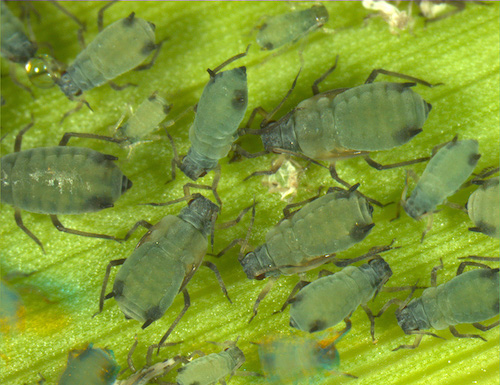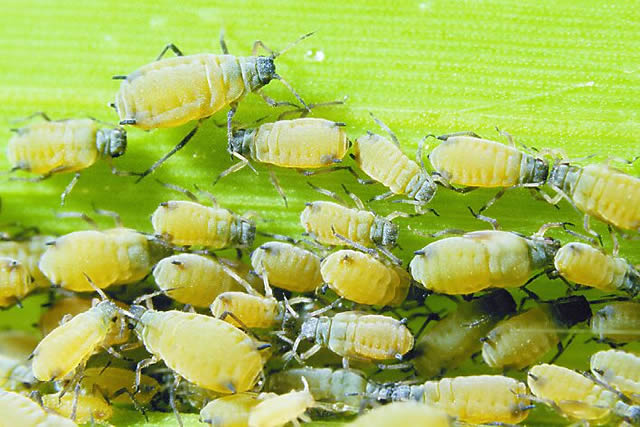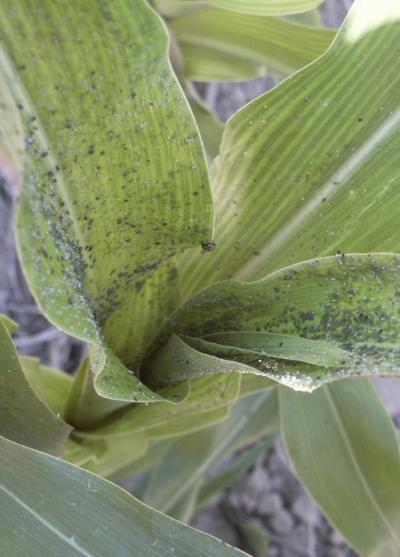Corn Leaf Aphid
Rhopalosiphum maidis
|
Note dark legs and cornicles, relatively short antennae |
Corn leaf aphids can be quite pale in color when they develop in hot weather. |
|
Sorghum whorl infested with corn leaf aphids. |
|
In spring, winged migrants arrive on the wind from southerly latitudes (or earlier planted corn fields) and initiate colonies deep in the whorl where they are detectable only by pulling out the central leaf and unrolling it. Observing the activities of lady beetles is the easiest way to locate infested plants at this stage. Although large colonies may remove substantial volumes of sap, they do not cause direct plant injury to sorghum in vegetative growth stages as plants are able to compensate for these losses. Historically, corn leaf aphid colonies would disappear before the panicle emerged fully, the majority of nymphs maturing into winged adults and dispersing in search of other plants in suitable growth stages. However, this pattern changed following the invasion of the sorghum aphid, and infestations of corn leaf aphid on seedling and whorl stage sorghum have recently become uncommon in Kansas.
Studies performed in the Texas panhandle in the 1990s indicate that whenever corn leaf aphid populations peak at or before boot stage in sorghum, subsequent infestations of greenbug do not become economically significant. This is because a diverse guild of aphid natural enemies is attracted by the corn leaf aphids, which then reproduce and increase their numbers before greenbug colonies are able to establish in the crop. Therefore, it is important for growers to distinguish between these two aphid species as unwarranted treatments of corn leaf aphids not only represent a waste of money, but may actually diminish subsequent biological control of the more damaging greenbug by eliminating beneficial species.
Following the invasion of the sorghum aphid, Melanaphis sorghi, beginning in 2013, corn leaf aphids began arriving later in Kansas sorghum and forming mixed colonies with sorghum aphids on plants at boot stage and beyond. In these circumstances, the corn leaf aphid exacerbates the problems caused by sorghum aphids, simply by increasing the total aphid numbers present. This dilutes the impact of predation on the more damaging sorghum aphids, and adds to the volume of honeydew produced, fostering the growth of sooty mold. In this situation, any treatment applied to control sorghum aphids will provide simultaneous control of corn leaf aphids. The initially large populations of sorghum aphid have now mostly disappeared from Kansas sorghum, but corn leaf aphids have continued to colonize flag leaves, sometimes establishing colonies that move up into developing panicles. Colonies that escape biological control can foul the heads with honeydew and mold and potentially impact seed fill. However, this is rarely a field-wide problem, and economic thresholds have never been established for corn leaf aphids in heading sorghum.
Page last updated on 10/16/2024 by J.P. Michaud.


